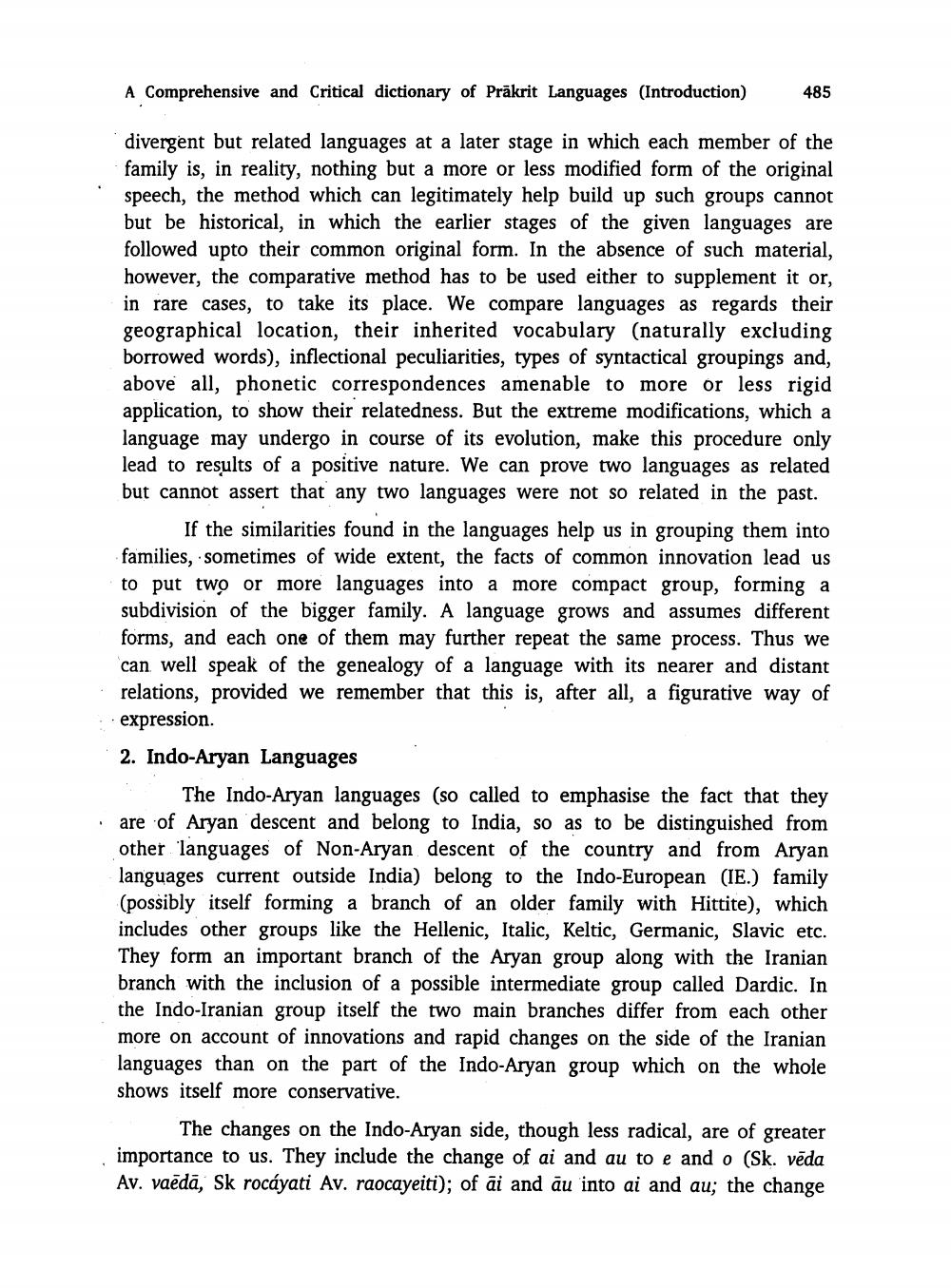________________
A Comprehensive and Critical dictionary of Prākrit Languages (Introduction)
485
divergent but related languages at a later stage in which each member of the family is, in reality, nothing but a more or less modified form of the original speech, the method which can legitimately help build up such groups cannot but be historical, in which the earlier stages of the given languages are followed upto their common original form. In the absence of such material, however, the comparative method has to be used either to supplement it or, in rare cases, to take its place. We compare languages as regards their geographical location, their inherited vocabulary (naturally excluding borrowed words), inflectional peculiarities, types of syntactical groupings and, above all, phonetic correspondences amenable to more or less rigid application, to show their relatedness. But the extreme modifications, which a language may undergo in course of its evolution, make this procedure only lead to results of a positive nature. We can prove two languages as related but cannot assert that any two languages were not so related in the past.
If the similarities found in the languages help us in grouping them into families, sometimes of wide extent, the facts of common innovation lead us to put two or more languages into a more compact group, forming a subdivision of the bigger family. A language grows and assumes different forms, and each one of them may further repeat the same process. Thus we can well speak of the genealogy of a language with its nearer and distant relations, provided we remember that this is, after all, a figurative way of expression. 2. Indo-Aryan Languages
The Indo-Aryan languages (so called to emphasise the fact that they are of Aryan descent and belong to India, so as to be distinguished from other languages of Non-Aryan descent of the country and from Aryan languages current outside India) belong to the Indo-European (IE.) family (possibly itself forming a branch of an older family with Hittite), which includes other groups like the Hellenic, Italic, Keltic, Germanic, Slavic etc. They form an important branch of the Aryan group along with the Iranian branch with the inclusion of a possible intermediate group called Dardic. In the Indo-Iranian group itself the two main branches differ from each other more on account of innovations and rapid changes on the side of the Iranian languages than on the part of the Indo-Aryan group which on the whole shows itself more conservative.
The changes on the Indo-Aryan side, though less radical, are of greater importance to us. They include the change of ai and au to e and o (Sk. vēda Av. vaēdā, Sk rocáyati Av. raocayeiti); of ai and au into ai and au; the change




